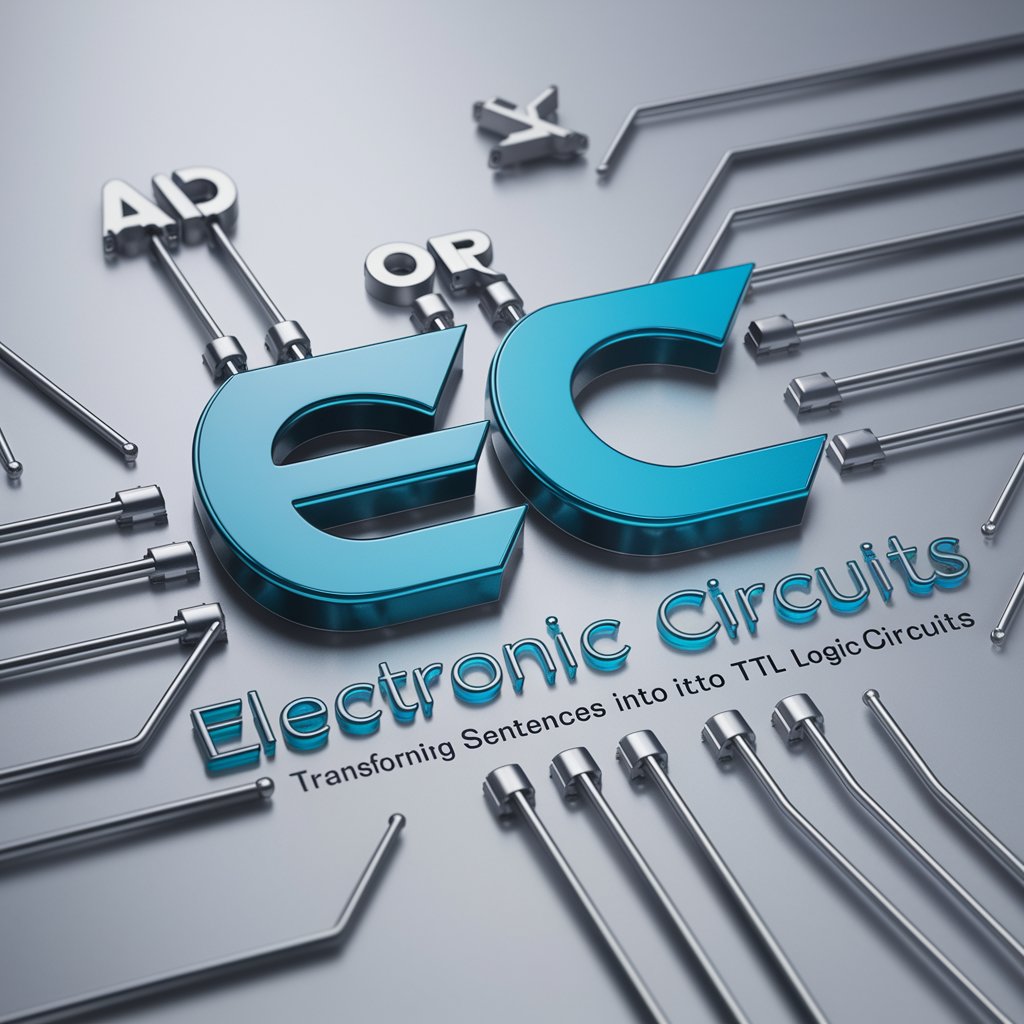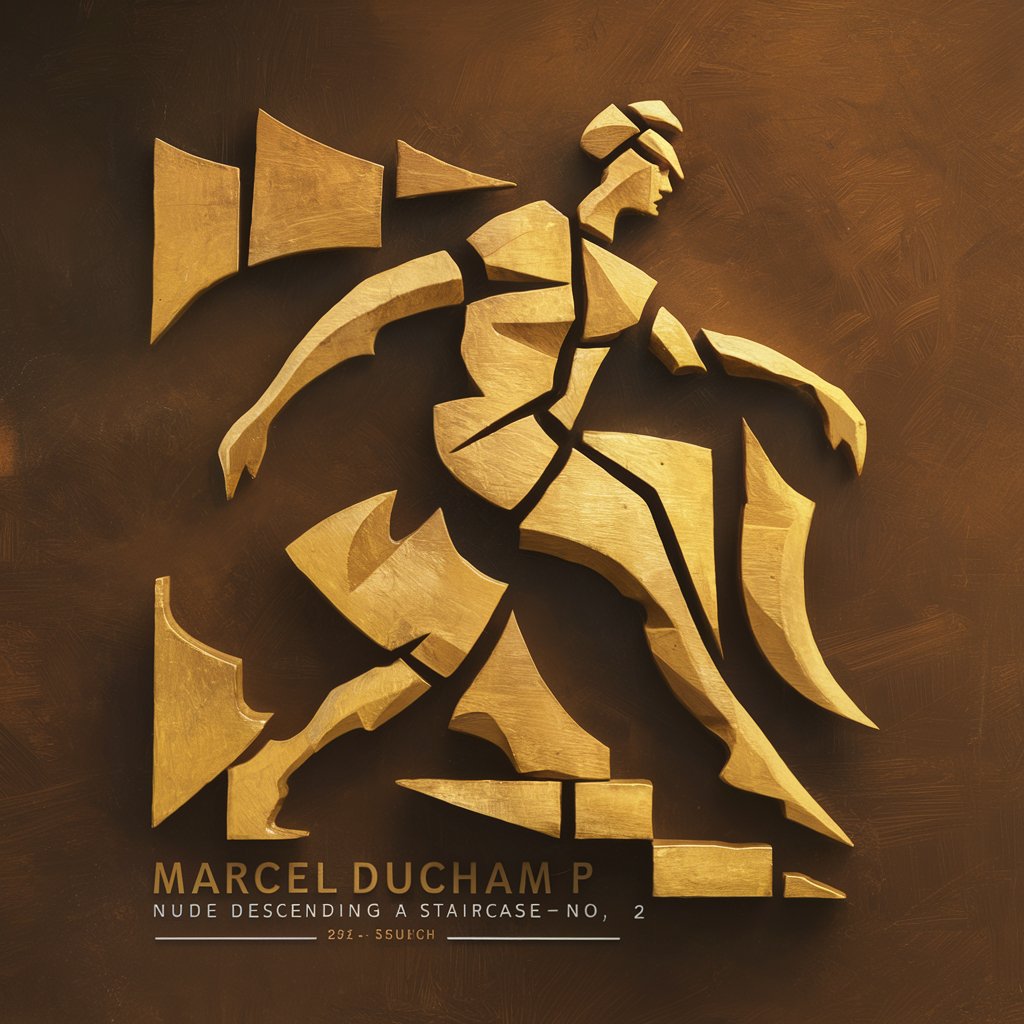electronic circuits - Online TTL Circuit Simulator

Welcome! Let's turn ideas into digital circuits.
Transforming ideas into circuits, powered by AI
Design a TTL logic circuit inspired by the concept of decision-making.
Create a logic circuit that represents the flow of information in a computer network.
Visualize a TTL circuit that mimics the process of human thought.
Generate a circuit diagram inspired by the structure of a complex sentence.
Get Embed Code
Introduction to Electronic Circuits
Electronic circuits are fundamental building blocks in modern electronics, composed of interconnected electronic components such as resistors, capacitors, transistors, and integrated circuits. They serve as pathways for the flow of electrical current, enabling the manipulation and processing of signals. Electronic circuits can range from simple configurations, like basic logic gates, to complex systems, such as microprocessors and communication networks. These circuits are designed to perform specific functions, transforming input signals into desired output responses. For example, a simple electronic circuit can act as a light switch, turning on or off a light bulb based on the presence or absence of an input signal. Powered by ChatGPT-4o。

Main Functions of Electronic Circuits
Signal Processing
Example
Amplification of audio signals in a stereo system.
Scenario
In a stereo amplifier circuit, electronic components amplify weak audio signals from sources such as a CD player or smartphone to drive speakers and produce sound at a higher volume.
Data Storage
Example
Data retention in computer memory circuits.
Scenario
Electronic circuits like RAM (Random Access Memory) store digital information temporarily, allowing computers to access and manipulate data quickly during processing tasks.
Control and Automation
Example
Temperature control in a thermostat circuit.
Scenario
A thermostat circuit monitors room temperature and activates a heating or cooling system to maintain a set temperature, providing comfort and energy efficiency.
Communication
Example
Transmission of data over a network in a router circuit.
Scenario
Electronic circuits within a router receive, process, and transmit data packets between devices connected to a network, facilitating internet communication.
Sensing and Detection
Example
Motion detection in a security system circuit.
Scenario
A security system circuit employs sensors to detect motion or changes in the environment, triggering alarms or notifying users of potential threats.
Ideal Users of Electronic Circuits
Electronics Hobbyists and Enthusiasts
Individuals interested in experimenting with electronics, building DIY projects, or learning about circuit design and functionality. They benefit from electronic circuits by gaining hands-on experience, exploring creative projects, and understanding the principles of electronics.
Electrical Engineers and Technicians
Professionals involved in designing, testing, and maintaining electronic systems and devices. They utilize electronic circuits to develop innovative products, troubleshoot technical issues, and optimize performance in various industries such as telecommunications, automotive, and aerospace.
Educational Institutions
Schools, colleges, and universities offering courses in electrical engineering, electronics, or related fields. They leverage electronic circuits as educational tools to teach students theoretical concepts and practical skills in circuit analysis, design, and implementation.

Using Electronic Circuits: A Step-by-Step Guide
1
Start at yeschat.ai for a hassle-free, login-free trial, including access to premium features without the need for ChatGPT Plus.
2
Review the tutorial section to understand the basics of TTL logic circuits, familiarize yourself with digital logic levels, and identify the electronic components involved.
3
Select a specific circuit or feature you wish to explore based on your project needs or educational goals. Example circuits are provided to facilitate hands-on learning.
4
Use the provided tools to simulate the electronic circuits online. Adjust parameters and components to see real-time changes and outcomes.
5
Evaluate the outcomes and troubleshoot as necessary. Utilize the community forums or support for guidance and to share insights with other users.
Try other advanced and practical GPTs
Spotify Analyzer
Unlock the power of AI for Spotify insights.

Chinese GPT
Empowering with AI-driven Chinese text generation.

Image Generator
Enhance your blog with AI-generated imagery.

Translator
Unlock seamless multilingual communication with AI translation.

文案3版
Unlock SEO Success with AI-Powered 文案3版

以图生图
Unlock Your Imagination with AI Artistry

Live
Empowering with AI-driven knowledge and assistance.

Nude Descending a Staircase No 2
Unleash avant-garde creativity with AI.

Ask Visual Basic (Excel Macro)
Empower your Excel with AI-driven VBA expertise.

Capacity Finder
Unlock Venue Capacities with AI Precision

Startup Hypotheses Validation Tool
Validate, Iterate, Succeed: AI-powered Business Hypothesis Validation

Penetration testing GPT
Empower Your Penetration Testing with AI

Frequently Asked Questions About Electronic Circuits
What is TTL logic in electronic circuits?
TTL, or Transistor-Transistor Logic, refers to a class of digital circuits built using bipolar junction transistors and resistors. It is used to create various logic gates and digital systems, characterized by fast switching times and low power consumption.
Can I simulate these circuits online?
Yes, the platform allows users to simulate TTL logic circuits online. You can modify components and parameters in real-time to observe different behaviors and logic outcomes.
Are there resources for beginners?
Absolutely, the platform includes tutorials and guides aimed at beginners. These resources cover basic concepts, practical applications, and step-by-step instructions on using the circuits.
What types of projects can I use these circuits for?
These circuits are ideal for educational projects, hobbyist experiments, and prototype engineering. They provide a hands-on approach to learning digital electronics and logic design.
How can I share my circuit designs with others?
The platform features a community section where you can share your designs, get feedback, collaborate with others, and view projects created by other users.
